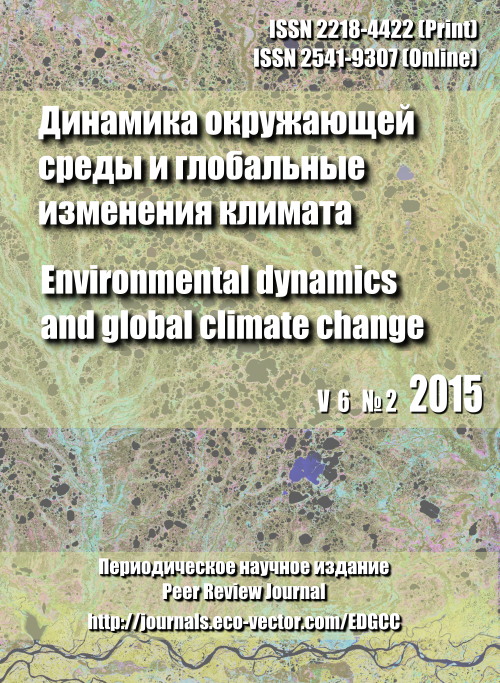Ecological and morphological characteristic Particoloured bat population in State Nature Reserce "Yuganskiy" area
- Authors: Pereyaslovets V.M1, Pereyaslovets T.S1
-
Affiliations:
- State Nature Reserve “Yugansky”
- Issue: Vol 6, No 2 (2015)
- Pages: 17-20
- Section: Articles
- Published: 15.12.2015
- URL: https://edgccjournal.org/EDGCC/article/view/6365
- DOI: https://doi.org/10.17816/edgcc6217-20
- ID: 6365
Cite item
Full Text
Abstract
Two species of bats are recorded from the Yugansky nature reserve area: the Particoloured Bat ( Vespertilio murinus L., 1758) and the Northern Bat (Eptesicus nilssoni Keyserling, Blasius, 1839). The bats of the region are exceptionally elusive and rare. The study of the ecology of their populations has been conducted since 2007. We study the bat population annually. Researchers conduct a census of bats. We use an ultrasound heterodyne detector D100 from Pettersson Electronic. In July and August, we organize catching of bats with 4 by 10 meter nets. The nets are set in place at 9 p.m. The trapping of bats ends at 4 a.m. All caught animals were released after tagging with special rings. None of the animals died during the capture process. In the course of 7 years, we caught and released 112 individuals of the Particoloured Bat. According to sex-age analysis, adult females prevail in the Particoloured bat population in the area. The number of adult males is very small, about 10% of the total population. The Particoloured Bat is a migratory species: the first individuals appear in our region in early summer. Pregnant females are the first to arrive, appearing in mid-June. Bats form small colonies, which are located in secluded places, such as various voids and holes in buildings, hollow tree trunks and cavities under bark. Newborns appear approximately in late June, with one or two newborns in the litter. Young bats become independent by the age of one month. The Particoloured Bat begin their night hunt about 10:30 p.m. Their prey consists of nocturnal moths and mosquitoes. The temperature of night air is a very important factor that affects the hunting activity of bats. Bats do not hunt when temperatures drop below 4ºC. A light rain does not interfere with the bat's hunt. They fly out to their hunting areas in groups of 5-6 individuals. There is a constant rotation of bat groups on the feeding site. The interval between the emergence of new groups of bats is 40-50 minutes. The autumn migration of bats begins in late August. The animals fly South along river valleys. Periodically they stop to rest and feed. Bats move to their wintering grounds in short spurts. Sightings of migrating bats in our region are usually recorded until mid-September. We conducted a statistical analysis of morphological parameters of samples taken from the Particoloured bat population. As a result, we discovered statistically significant differences in size between adult and young individuals.
Keywords
About the authors
Vladimir M Pereyaslovets
State Nature Reserve “Yugansky”
Author for correspondence.
Email: pvm16@yandex.ru
Russia, Ugut
Tatiana S Pereyaslovets
State Nature Reserve “Yugansky”
Email: pvm16@yandex.ru
Russia, Ugut
References
- Крускоп, C.B. 1998. Эколого-морфологическое разнообразие гладконосых рукокрылых (Vespertilionidae, Chiroptera): автореферат дис. канд. биол. наук. М. 24 с.
- Панютин К.К. 1970. Экология летучих мышей в лесных ландшафтах: автореферат дис. канд.биол.наук. М. 24 с.
- Переясловец В.М., Переясловец Т.С. 2007. К фауне рукокрылых заповедника "Юганский" // Биологические ресурсы и природопользование. Выпуск 10. / Под ред. Г.М. Кукуричкина. Сургут: Дефис. С. 229-234.
- Стариков В.П., Емцев А.А., Берников К.А. и др. 2011. Биоразнообразие Югры: редкие и исчезающие животные. Тобольск: ООО " Полиграфист". 184 с.
Supplementary files










